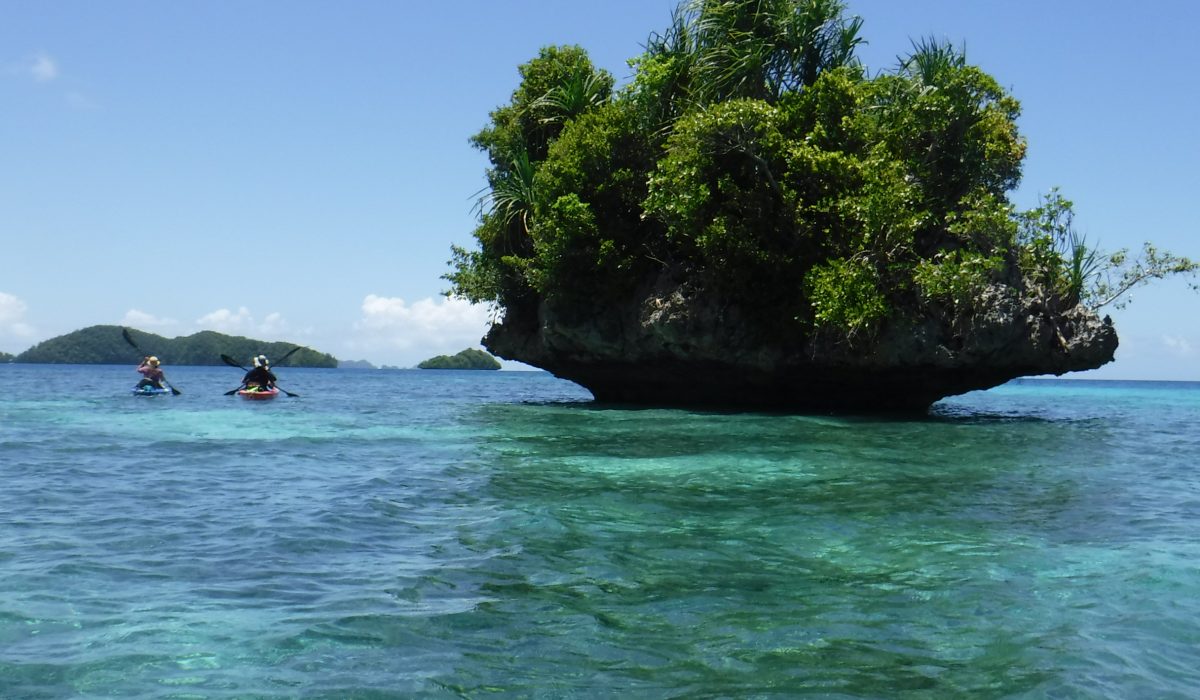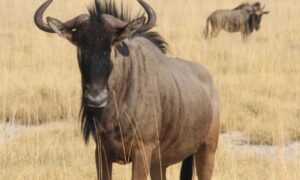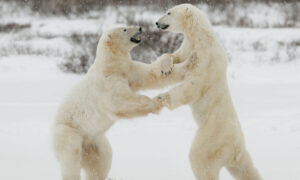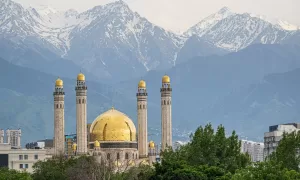
Speaking of Faraway Places: Palau
by Kate Dernocoeur, guest blogger
Imagine visiting a completely new world, something of which you have zero experience, and add the luxury of being guided by someone who knows it inside and out. Now travel by air about 8,000 miles west and south for about 22+ hours, to a dot on the ocean a few degrees north of the equator: the Republic of Palau! This Pacific archipelago nation of 386 islands is world-famous for its underwater world of marine beauty and diversity. Those in the know will tell you: Palau has some of the best snorkeling on the planet.

I was lucky enough to go there in March for a 12-day introduction to the reefs and coral, fish and animals, people and their culture. It was magical. With mask and snorkel, our group of 12 followed the enthusiastic leadership of Ron Leidich, a gifted naturalist and teacher who first arrived in Palau 25 years ago. First he was smitten by the place and then by a beautiful Palauan woman. He proposed to her (and thus her clan), and the rest, as they say, is history.

Never pedantic, Ron always shared his knowledge of both common and Latin names of plants and animals on land and underwater, plus birds joyfully. He was also a trove of information about Palauan culture, local World War II history, and even the two episodes of Survivor filmed in the tiny nation which gained its independence from its status as a protectorate of the United States in 1981.

Our expedition was supported seamlessly by Ron’s Rock Island Kayak Expeditions team, who set up our beach camps and cooked and managed the speedboat support and were inevitably cheerful about hundreds of logistical details; they love camping, too. We were very (!) spoiled.

Only a few of the islands of Palau are inhabited. The great majority of the population of about 22,000 lives in or near the main town of Koror, or on the adjacent island of Babeldaob. Only two of the islands are volcanic; everything else rose up from the ocean floor when two tectonic plates collided in prehistory. Palau is largely made of unforgiving limestone, a hard, sharp-edged, durable substance that resembles badly osteoporitic bone. You do not want to fall down on it, believe me. Overgrowing much of the limestone is dense, almost impenetrable foliage. As we traveled among the outlying “Rock Island” area, it was easy to imagine getting lost among the green, mushroom-looking islands with their 12-foot overhang. This overhang is generated by primordial mollusks with segmented shells that resemble medieval armor. The little critters, called chitons, gnaw a meter or so of limestone every hundred years, they say, leaving for us kayakers a delightful refuge from the sun on hot days!


The story of the journey to Palau needs to be told in parts, so stay tuned for Part 2, coming soon! [For anyone interested, there are two additional parts in the “Generally” Write” blog at www.katedernocoeur.com]

Kate Dernocoeur is a frequent guest blogger at Design Destinations, and lives with her German shepherd dog on a quiet road in Vergennes Twp, Michigan.





